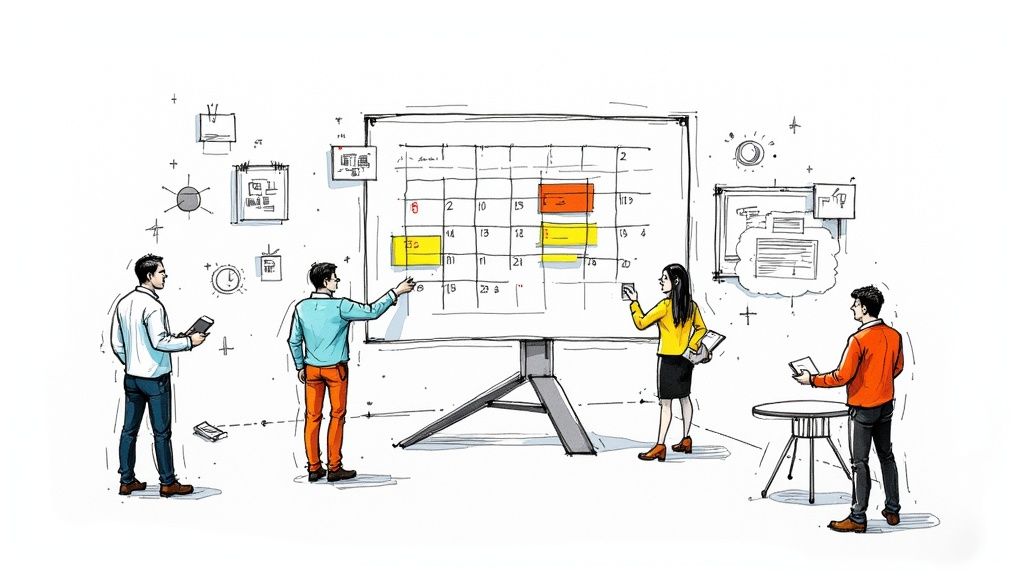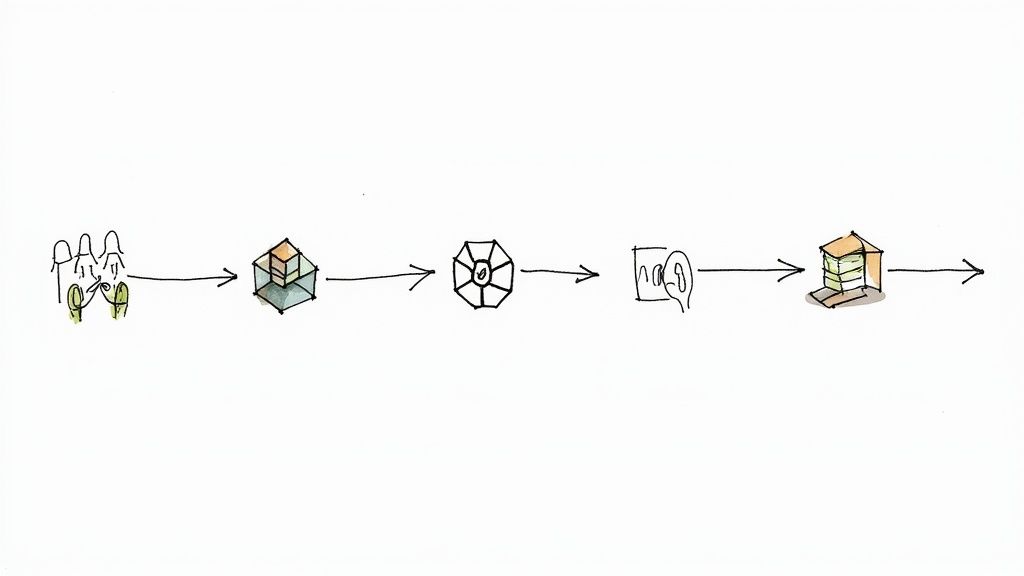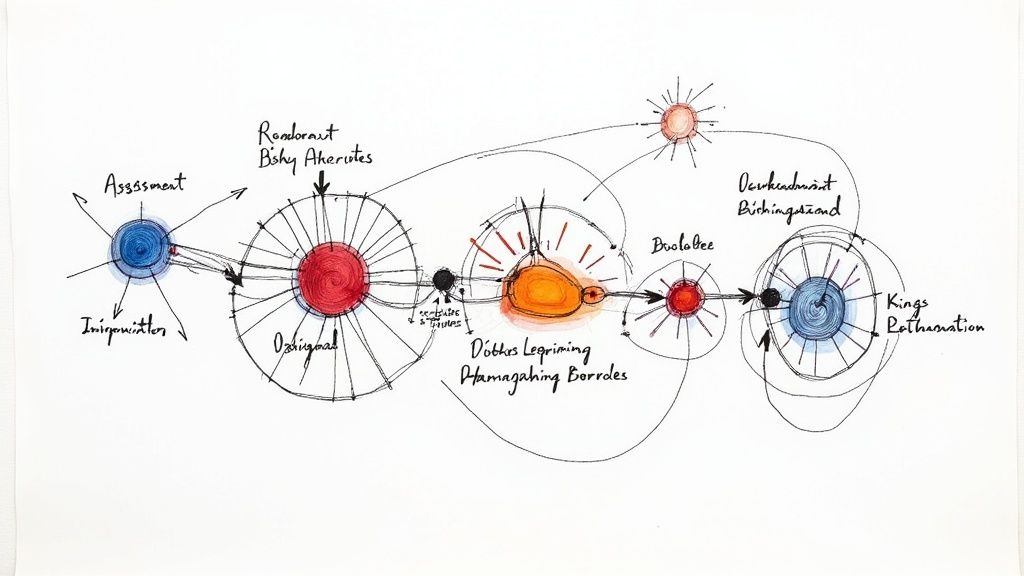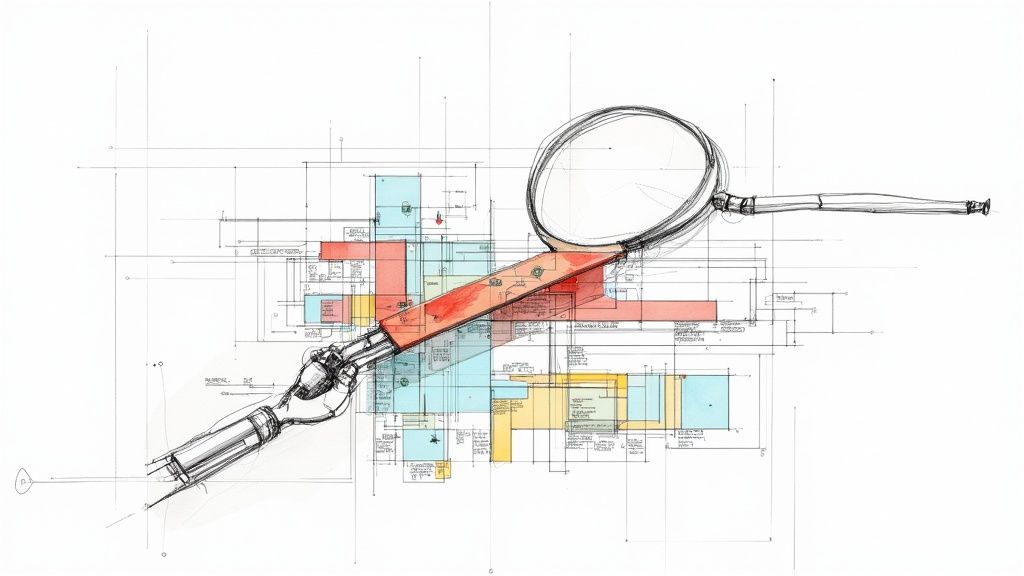Release Management Best Practices: A Strategic Guide to World-Class Software Delivery

Understanding Release Management Fundamentals

Release management is a disciplined approach to deploying software successfully. Much like a conductor guiding an orchestra, a release manager coordinates multiple teams and processes to deliver software smoothly. When done well, each component works in sync to create a successful release.
Core Components of Effective Release Management
Clear ownership is essential for successful releases. Having designated owners for each task eliminates confusion and helps team members take responsibility. For instance, when specific developers own certain features, tracking progress and fixing issues becomes straightforward.
Strong communication between teams makes releases run smoothly. When developers, testers, operations teams and other stakeholders share information effectively, everyone stays aligned. Regular check-ins, status updates, and clear documentation help keep everyone informed about progress and potential issues.
A well-designed release strategy helps connect release activities to business goals. This involves creating clear processes and defining team roles. Research shows that standard release workflows reduce mistakes and prevent duplicate work. Learn more about release management principles at Digital.ai.
Building a Solid Foundation for Release Success
A structured release framework provides the foundation for success. This framework outlines the key stages and responsibilities for each release. Having this structure makes complex releases more manageable and predictable.
Key technical components include:
- Version control to track code changes
- Test environments to validate releases
- Deployment pipelines to automate the process
Feedback loops help teams improve over time. By gathering input from all stakeholders after each release, teams can identify what worked well and what needs adjustment. This helps organizations refine their processes and become more efficient with each release cycle.
Measuring Success: Key Metrics That Actually Matter

Getting software releases right means focusing on the right data. It's not about collecting every possible metric - it's about tracking the numbers that show you're delivering quality software reliably and efficiently. Let's look at which measurements really help improve your release process.
Key Metrics for Release Management Success
These are the core metrics that give you real insight into how well your release pipeline is working and where you can make it better:
- Deployment Frequency: How often do you push code to production? When you can deploy small changes frequently with good testing, it usually means your process is working well. Small, frequent releases tend to be safer than big, infrequent ones.
- Lead Time for Changes: This tracks how long it takes code to go from commit to production deployment. Quick lead times usually mean your workflow is efficient. As the team at Zeet explains, lead time helps spot slowdowns in your process.
- Change Failure Rate: What percentage of deployments cause problems or need to be rolled back? A low failure rate shows your testing and quality checks are doing their job. This directly affects how happy your users are with your software.
- Mean Time to Recovery (MTTR): When something goes wrong, how fast can you fix it? Quick recovery times mean your team is good at finding and fixing issues fast. Having clear processes for handling problems helps keep MTTR low.
Implementing a Metrics-Driven Approach
To make these metrics useful, you need a clear plan. Here's how to turn the numbers into real improvements:
- Define Clear Objectives: What do you want your release process to achieve? Maybe you need faster releases, better stability, or less risk. Make sure these goals match what your business needs.
- Establish Baselines: Measure how you're doing now. This gives you a starting point to track progress and show when changes are working.
- Regular Monitoring and Reporting: Set up systems to track and report your key metrics consistently. This data helps spot problems early and make better decisions about your release process. Mergify and similar tools can help automate parts of your workflow so you can focus on making improvements.
By tracking these important metrics and using them to guide decisions, you can build a release process that consistently delivers quality software. This approach helps teams get better over time and leads to faster, more reliable releases with fewer problems.
Building a Release Strategy That Actually Works
A well-crafted release management strategy provides the foundation for delivering software reliably and consistently. Success requires careful planning around key areas like risk management, team coordination, and clear processes. Let's explore how successful teams put this into practice.
Planning for Success: Risk Assessment and Resource Allocation
Proactive risk assessment is essential for smooth releases. Teams need to identify potential issues early - like dependencies on other teams or systems - so they can develop backup plans before problems arise. Equally important is smart resource allocation. Having the right people and tools available at the right time prevents bottlenecks and delays. Just as construction projects need materials delivered on schedule, software releases need developers, testers, and infrastructure ready when needed.
Release Planning: A Blueprint for Execution
Good release planning maps out the specific steps, timelines and responsibilities for deploying software. Teams should establish clear release criteria - the specific conditions that must be met before deployment, such as passing automated tests, getting stakeholder sign-off, or hitting performance targets. This clarity helps prevent confusion and miscommunication. Teams also need procedures for handling unexpected challenges. Like pilots who prepare for bad weather, release managers must be ready to address unforeseen issues quickly. Looking at industry data, changing requirements are the main reason releases miss deadlines, highlighting why strong release management matters. See Plutora's key release metrics for more insights.
Managing Complexities and Maintaining Quality
The most effective teams excel at handling complex dependencies while upholding quality standards, even with tight timeframes. Breaking large releases into smaller pieces helps - this allows for faster feedback and earlier problem detection. Tools like Mergify can help automate many release tasks, freeing teams to focus on quality. Regular communication with stakeholders about progress and potential issues is also crucial for setting expectations and maintaining alignment throughout the release cycle.
Mastering the Art of Staged Rollouts

Smart teams know that rushing new features to all users at once is risky. That's where staged rollouts come in - they let you test changes with small groups first. Think of it like dipping your toe in the water before diving in. You can spot issues early and fix them before they affect everyone.
Why Staged Rollouts are a Best Practice
Picture releasing a major update to all users, only to discover a serious bug. Not fun! Staged rollouts prevent this nightmare scenario. Start with just 10% of users, watch how things go, then expand to 25%, 50%, and finally 100%. This measured approach catches problems when they're small and manageable. Want the data behind this approach? Check out Statsig's research on release management.
Implementing Effective Staged Rollouts
Getting staged rollouts right takes careful planning. Here's what matters most:
- Target Audience Segmentation: Pick user groups that represent your full customer base. This shows how your changes work for different types of users.
- Monitoring and Metrics: Keep an eye on error rates, speed, and how people use the new features. This data tells you when it's safe to roll out to more users.
- Automated Rollback: Set up quick ways to undo changes if something goes wrong. Fast rollbacks keep problems from spreading.
- Communication Plan: Tell users what's happening. Being open about your staged approach builds trust, even if some users have to wait for new features.
Automation and Tools for Staged Rollouts
Good tools make staged rollouts much easier to manage. Mergify helps by handling code merges and deployments automatically. Instead of juggling complex technical steps, your team can focus on what the data shows and what users say. This means better, more reliable updates that your users will actually enjoy.
Creating Documentation That People Actually Use
Clear, helpful documentation drives successful release management. However, just having documents isn't enough - teams need resources they can easily access, understand and apply in their daily work.
Moving Beyond Static Documentation
Let's face it - traditional release documentation often sits unused. When docs are hard to update, difficult to find, or disconnected from actual work, knowledge gets trapped and teams waste time hunting for or recreating information. The solution is making documentation an ongoing priority, not a one-time task.
Best Practices for Effective Release Documentation
Focus on these key approaches to create documentation teams will actually use:
- Make It Central: Keep all release information in one easy-to-access spot like a knowledge base or wiki. Everyone involved should know exactly where to find what they need.
- Track Changes: Document versions just like code changes. This helps track updates, revert if needed, and ensures teams use current information.
- Share Ownership: Documentation works best when the whole team contributes. Encourage everyone to add, update and review content to keep it relevant.
- Easy to Search: Use clear headings, consistent formatting and keywords so teams can quickly find specific details. The easier it is to navigate, the more likely it will be used.
- Focus on Action: Provide clear step-by-step guides, checklists and real examples teams can apply directly. Skip unnecessary technical jargon. Well-documented processes help preserve and share knowledge effectively. Learn more about release management best practices at Zeet.
Modern Tools and Techniques
Several tools can help make documentation more effective:
- Knowledge Platforms: Tools like Confluence and Notion provide central hubs for creating and sharing docs.
- Auto-Generation: Tools that create documentation from code comments save time and maintain consistency.
- Tool Integration: Connecting docs with tools like Mergify creates smooth workflows where documentation updates automatically alongside releases.
By following these practical approaches and using helpful tools, teams can build documentation habits that support smooth releases, preserve knowledge, and help everyone succeed.
Future-Proofing Your Release Process

Software development practices are always moving forward. Keeping your release process effective requires adapting to technical changes and learning new methods. Building flexibility into your approach helps you stay responsive to improvements in tools and processes.
Embracing Change in Your Release Management Strategy
Smart teams pay attention to what's new and useful. AI-assisted tools are reshaping release management by handling routine tasks, finding patterns in data, and spotting issues early. The key is carefully choosing which new tools actually make your process better, not just chasing every trend.
Your release process needs to grow smoothly as your work expands. Building in scalability from the start helps you handle more complex projects and larger teams without major disruptions. This often means bringing in targeted automation and stronger testing practices.
Adapting to Evolving Development Practices
Teams using continuous integration and continuous delivery (CI/CD) need release management that supports quick, frequent updates. The focus is on automation, small regular releases, and getting fast feedback. Making these changes work means careful planning and giving teams time to learn and adjust.
Evaluating New Technologies and Approaches
When picking new tools, focus on these practical points:
- Integration: Does it work well with your current setup?
- Cost: Will the benefits justify the price?
- Learning Curve: How quickly can your team get up to speed?
- Impact on Existing Processes: What changes will you need to make?
Start small with new tools - try them with one team first. This helps you spot and fix problems before rolling out bigger changes. Taking careful steps reduces risks and helps ensure success. Mergify helps teams run smooth releases and add new tools easily to their workflow. Visit their site to learn how they can help improve your team's release process.





